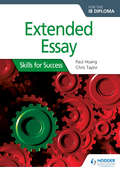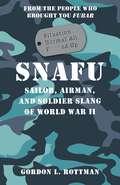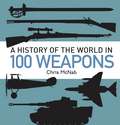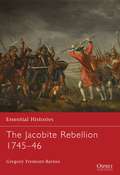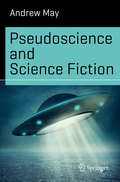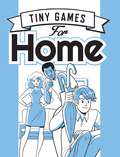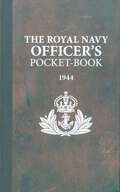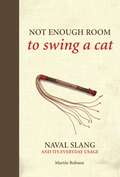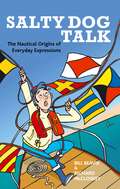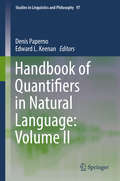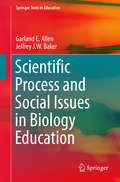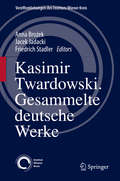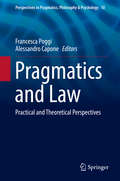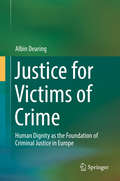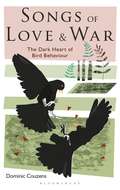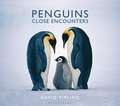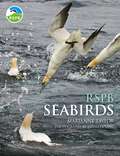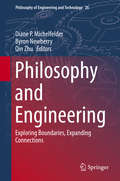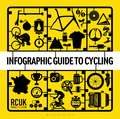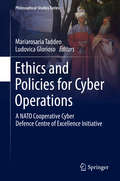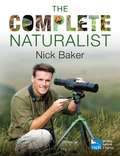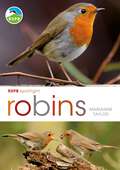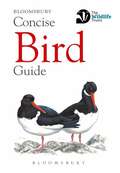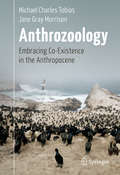- Table View
- List View
Extended Essay for the IB Diploma: Skills for Success
by Paul Hoang Chris TaylorBuild confidence in a range of key essay writing techniques and skills with this practical companion, full of advice and guidance from experienced EE experts.· Build essay writing techniques and skills through a range of strategies, serving as a useful companion throughout the writing process - from the development of a research question, critical-thinking, referencing and citation to reflecting on the process and final essay· Concise, clear explanations help you navigate the IB requirements, including advice on assessment objectives and academic honesty· Learn what is required to get the best EE grades and write an excellent essay with detailed examiner advice and expert tips and hints, including common mistakes to avoid · Explicit reference to the IB Learner profile and the importance of reflection. Paul Hoang is Vice Principal at Sha Tin College, English Schools Foundation in Hong Kong. He writes for Business Review, published by Philip Allan. He is a member of the editorial board for IB Review, Philip Allan's flagship publication for the IB. Paul is the author of several publications including Economics for the IB Diploma Revision Guide (Hodder Education), IB Business Management, 3rd edn (IBID Press), IGCSE Business Studies for Edexcel (Anforme), and Cambridge IGCSE and O Level Economics (Hodder Education). He is an IB examiner and has over 10 years of experience as an IB Workshop Leader.Chris Taylor is Extended Essay Coordinator at Sha Tin College - an international school and IB World School with over 1200 students. He teaches IB History and has examined the EE component of the Diploma for over 10 years. Chris authored Riding the Dragon (2013), a book that details his visits to every province in China and the culture, history and people in each of these. He is a regular contributing author of IB Review magazine, specialising in IB History and the Extended Essay. Having visited many countries, Chris is also a travel writer for the South China Morning Post, Hong Kong's leading English language newspaper.
SNAFU Situation Normal All F***ed Up: Sailor, Airman, and Soldier Slang of World War II (General Military Ser.)
by Gordon L. RottmanMilitary life has always been ruled by its own language, specific sets of terms and phrases that separate the serving man or woman from their civilian counterpart. There is the official version of ranks and acronyms, and the more unofficial, colloquial language of the barrack room and battlefield. This new title explores the language and slang of the major combatant powers, delving into their origins and explaining their uses. All of this will be illustrated with contemporary cartoons and other images showing the phrases in use. This title is designed specifically as a follow-up to 2007's FUBAR: Soldier Slang of World War II, and will differ from the original book in that it will cover the slang of sailors and airman, as well as soldiers. Detailed sections will be included for each of the major combatants of World War II, and additional appendices will detail the nicknames given to the major surface vessels and aircraft types of the war.
A History of the World in 100 Weapons (General Military Ser.)
by Chris McNabOur history has been shaped and changed by weapons: the smallest advances in weapons development have helped to build and overthrow empires, changed the course of civilization, driven modern technology, and won wars. For thousands of years, individual pieces of weaponry have come to symbolize struggles and nations, from the Roman gladius to the English longbow, and from the flintlock musket through to the AK47. This book reveals the weapons that had the greatest impact on our history, explaining how and why they came to prominence, and uncovers the lasting effect they had on the world.
Ship Spotter’s Guide
by Angus KonstamSince the days of the Ancient Greeks, naval ships of all sizes have revolutionized warfare. From the Viking longship, pirate ships and super dreadnoughts to today's nuclear submarines and aircraft carriers, naval warfare has proved to be an essential component of military forces across the world. The Ship Spotter's Guide provides essential information on 40 iconic ships, using detailed profile artwork to illustrate and aid recognition, as well as specification boxes to provide all the technical details.
The Jacobite Rebellion 1745–46 (Guide to...)
by Gregory Fremont-BarnesThe Jacobite Rebellion was the final attempt of the House of Stuart to re-establish itself on the British throne and it saw the death throes of the independent martial prowess of the Highland clans. No event in British history has been more heavily romanticized, but Gregory Fremont-Barnes succeeds in stripping away the myths to reveal the key events of this crucial period. From questions of dynastic succession to religious dominance, the events leading to the Rebellion are carefully explained and analyzed, drawing upon a host of primary research. From the landing of Bonnie Prince Charlie to the battle of Culloden, this book offers a complete overview of the Rebellion, complete with detailed maps and beautiful period illustrations.
Pseudoscience and Science Fiction (Science and Fiction)
by Andrew MayAliens, flying saucers, ESP, the Bermuda Triangle, antigravity … are we talking about science fiction or pseudoscience? Sometimes it is difficult to tell the difference. Both pseudoscience and science fiction (SF) are creative endeavours that have little in common with academic science, beyond the superficial trappings of jargon and subject matter. The most obvious difference between the two is that pseudoscience is presented as fact, not fiction. Yet like SF, and unlike real science, pseudoscience is driven by a desire to please an audience – in this case, people who “want to believe”. This has led to significant cross-fertilization between the two disciplines. SF authors often draw on “real” pseudoscientific theories to add verisimilitude to their stories, while on other occasions pseudoscience takes its cue from SF – the symbiotic relationship between ufology and Hollywood being a prime example of this. This engagingly written, well researched and richly illustrated text explores a wide range of intriguing similarities and differences between pseudoscience and the fictional science found in SF. Andrew May has a degree in Natural Sciences from Cambridge University and a PhD in astrophysics from Manchester University. After many years in academia and the private sector, he now works as a freelance writer and scientific consultant. He has written pocket biographies of Newton and Einstein, as well as contributing to a number of popular science books. He has a lifelong interest in science fiction, and has had several articles published in Fortean Times magazine
Tiny Games for Home (Osprey Games Ser.)
by Hide Seek Paulina GanucheauDesigned to give the maximum amount of fun for the minimum amount of rule-reading, Tiny Games for Home will let you find the perfect game for whatever situation you're in. All you need is this book, and the stuff that's around you. (Friends optional) There are games to play with spoons and sofas and TVs and turnips and books and bottles. Games about words, games about celebrities, games about the things and the people and the places in your life. Games for TV commercial breaks, games for toast, and games for lying in bed. Whether you're feeling creative or competitive, silly or energetic, we've got you covered."It's like carrying around a collection of Victorian parlour games – except the Tiny Games take advantage of modern social settings and contexts. They're amusing, raucous and inventive†? - The Guardian
The Royal Navy Officer's Pocket-Book
by Brian Lavery""The art of command is…to be the complete master, and yet the complete friend of every man on board; the temporal lord and yet the spiritual brother of every rating; to be detached and yet not dissociated.'A Seaman's Pocket-Book, 1943', has found huge appeal with the British public. Presented in the same format, the Officer's Handbook gathers together useful advice and instruction for those naval officers fighting the Second World War on all aspects of their job, expressed in the benevolent language of the day, when authority was respected.The Handbook has been compiled and edited by Brian Lavery, who provides commentary and an introduction. Sections include: the Officer's Aid Memoire containing notes of the training course at one of the officer training schools; Notes for medical officers and treatment of battle casualties afloat; Notes for captains on taking command of their first ship; Notes for commanding officers; Notes on the handling and safety of ships and notes on dealing with disobedience and mutiny.While suffused with nostalgia and charm, the various contents of this book are an authentic presentation of matters of training, authority and deportment in the wartime navy. The book is sure to appeal not only to those who served in the war or had a relative who was in the officer class, but also to anyone who wants to gain a greater understanding of the day-to-day administration of the wartime navy.
Not Enough Room to Swing a Cat: Naval slang and its everyday usage
by Martin RobsonAs the crow flies'', ''chunder'', ''cold enough to freeze the balls off a brass monkey'', ''three sheets to the wind'' - many terms like these are used in everyday English language conversation and writing. But how many landlubbers know that they derive from naval slang or know what the phrase originally referred to? The navy has helped to shape modern society. The navy is famous for its traditions, quirks and nuances. It is disinctly different to wider society and nowhere is this more evident than in language. The naval community once had its own language, incomprehensible to anyone who was not a sailor, which described and explained his unique world. But on shore leave these men introduced their language to the populations of bustling ports and harbours and the usage slowly spread inland. Today through the mediums of film, television and music, naval slang has been brought to the wider public and has become fully integrated into the English language to point where many phrases are used by people who have no concept of their meaning. Presenting terminology thematically, this book provides a compilation of naval slang throughout the world, from terms relating to ship-handling and seamanship through to food and drink, discipline and insults. The text is further enhanced with original black line drawings that illustrate certain technical terms, such as ''splice the mainbrace''.
Salty Dog Talk: The Nautical Origins Of Everyday Expressions (Sailmate Ser.)
by Bill Beavis Richard G. McCloskeyMost of us never realise how many words and expressions used ineveryday English have a nautical origin. This fascinating and charmingpocket book explains the seafaring beginnings of over 200 such phrases - colourful, bizarre and surprising - and how they came ashore.Just a few examples are:Chock-a-block Chance your arm Money for old rope Spic and span Push the boat out At close quartersThis entertaining book has been a popular title for boaters and landlubbers alike, ever since first publication in 1983.'Good fun' Yachts and Yachting 'Entertaining, informative, educational and lots of fun' Multihull International'An entertaining and informative little book' Motor Boats Monthly
Handbook of Quantifiers in Natural Language: Volume II (Studies in Linguistics and Philosophy #97)
by Denis Paperno Edward L. KeenanThis work presents the structure, distribution and semantic interpretation of quantificational expressions in languages from diverse language families and typological profiles. The current volume pays special attention to underrepresented languages of different status and endangerment level. Languages covered include American and Russian Sign Languages, and sixteen spoken languages from Africa, Australia, Papua, the Americas, and different parts of Asia. The articles respond to a questionnaire the editors constructed to enable detailed crosslinguistic comparison of numerous features. They offer comparable information on semantic classes of quantifiers (generalized existential, generalized universal, proportional, partitive), syntactically complex quantifiers (intensive modification, Boolean compounds, exception phrases, etc.), and several more specific issues such as quantifier scope ambiguities, floating quantifiers, and binary (type 2) quantifiers. The book is intended for semanticists, logicians interested in quantification in natural language, and general linguists as articles are meant to be descriptive and theory independent. The book continues and expands the coverage of the Handbook of Quantifiers in Natural Language (2012) by the same editors, and extends the earlier work in Matthewson (2008), Gil et al. (2013) and Bach et al (1995).
Scientific Process and Social Issues in Biology Education (Springer Texts in Education)
by Garland E. Allen Jeffrey J.W. BakerThis book complements fact-drive textbooks in introductory biology courses, or courses in biology and society, by focusing on several important points: (1) Biology as a process of doing science, emphasizing how we know what we know. (2) It stresses the role of science as a social as well as intellectual process, one that is always embedded in its time and place in history.In dealing with the issue of science as a process, the book introduces students to the elements of inductive and deductive logic, hypothesis formulation and testing, the design of experiments and the interpretation of data. An appendix presents the basics of statistical analysis for students with no background in statistical reasoning and manipulation. Reasoning processes are always illustrated with specific examples from both the past (eighteenth and nineteenth century) as well as the present.In dealing with science and social issues, this book introduces students to historical, sociological and philosophical issues such as Thomas Kuhn’s concept of paradigms and paradigm shifts, the social-constructions view of the history of science, as well as political and ethical issues such human experimentation, the eugenics movement and compulsory sterilization, and religious arguments against stem cell research and the teaching of evolution in schools.In addition to specific examples illustrating one point or another about the process of biology or social-political context, a number of in-depth case studies are used to show how scientific investigations are originated, designed, carried out in particular social/cultural contexts. Among those included are: Migration of monarch butterflies, John Snow’s investigations on the cause of cholera, Louis Pasteur’s controversy over spontaneous generation, the mass extinction of the dinosaurs, and the Tuskegee syphilis experiment.
Kasimir Twardowski: Gesammelte deutsche Werke (Veröffentlichungen des Instituts Wiener Kreis #25)
by Anna Brożek Jacek Jadacki Friedrich StadlerKasimir Twardowski (geb. 1866 in Wien, gestorben 1938 in Lemberg) war einerseits eine der wichtigsten Figuren der Brentanoschule und andererseits der Begründer der Lemberg-Warschau-Schule der Philosophie. Der Band enthält sämtliche Schriften, die Twardowski auf Deutsch verfasst hat. Die meisten davon wurden veröffentlicht, bevor Twardowski 1895 zum Professor für Philosophie an der Universität Lemberg ernannt wurde. Danach publizierte er fast ausschließlich in polnischer Sprache. Als Lehrer von Kazimierz Ajdukiewicz, Tadeusz Kotarbiński, Stanisław Leśniewski, Jan Łukasiewicz und vielen anderen regte Twardowski eine ganze Generation bedeutender junger polnischer Philosophen zu ihren Leistungen in der Logik und ihren Anwendungen an. Twardowskis 1892 veröffentlichte Habilitationsschrift „Zur Lehre vom Inhalt und Gegenstand der Vorstellung“ hatte großen Einfluss auf Edmund Husserl, auf Alexius Meinong und, durch George Stout, auch auf die frühe englische analytische Bewegung. Neben Dissertation und Habilitationsschrift enthält der Band auch kleinere Schriften Twardowskis. Dazu gehören Buchrezensionen, in denen er sich als herausragender Kritiker philosophischer Werke zeigt, ebenso wie Konzertkritiken und journalistische Arbeiten – darunter eine zur Geschichte der Universität Lemberg. Der Band dokumentiert darüber hinaus Material aus dem Archiv der Wiener Universität im Zusammenhang mit seiner Promotion und Habilitation.
Pragmatics and Law: Practical and Theoretical Perspectives (Perspectives in Pragmatics, Philosophy & Psychology #10)
by Francesca Poggi Alessandro CaponeThis volume is the second part of a project which hosts an interdisciplinary discussion about the relationship among law and language, legal practice and ordinary conversation, legal philosophy and the linguistics sciences. An international group of authors, from cognitive science, philosophy of language and philosophy of law question about how legal theory and pragmatics can enrich each other.In particular, the first part is devoted to the analysis of how pragmatics can solve problems related to legal theory: What can pragmatics teach about the concept of law and its relationship with moral, and, in particular, about the eternal dispute between legal positivism and legal naturalism? What can pragmatics teach about the concept of law and/or legal disagreements?The second part is focused on legal adjudication: it aims to construct a pragmatic apparatus appropriate to legal trial and/or to test the tenure of the traditional pragmatics tools in the field. The authors face questions such as: Which interesting pragmatic features emerge from legal adjudication? What pragmatic theories are better suited to account for the practice of judgment or its particular aspects (such as the testimony or the binding force of legal precedents)? Which pragmatic and socio-linguistic problems are highlighted by this practice?
Justice for Victims of Crime: Human Dignity as the Foundation of Criminal Justice in Europe
by Albin DearingThis book analyses the rights of crime victims within a human rights paradigm, and describes the inconsistencies resulting from attempts to introduce the procedural rights of victims within a criminal justice system that views crime as a matter between the state and the offender, and not as one involving the victim. To remedy this problem, the book calls for abandoning the concept of crime as an infringement of a state’s criminal laws and instead reinterpreting it as a violation of human rights. The state’s right to punish the offender would then be replaced by the rights of victims to see those responsible for violating their human rights convicted and punished and by the rights of offenders to be treated as accountable agents.
Songs of Love and War: The Dark Heart Of Bird Behaviour
by Dominic CouzensThe dawn chorus: a single voice cutting through the darkness heralds a breaking wave of sound at the very beginning of the day. It is an iconic natural phenomenon with many familiar performers, yet it is a mysterious event for which there is no complete explanation.A mass of starlings gathers at the end of the midwinter day. As the sun sets, wave upon wave of bodies rolls in and embarks upon another of nature's great attempts to show off. The murmuration is another much-admired spectacle, but again its purpose is obscure and defies our understanding. From dawn until dusk, birds do things that are surprising and mystifying. Songs of Love and War delves into bird behaviour and uncovers its purpose and meaning.More than just an inside look at bird behaviour, this book also represents a personal journey of discovery. What starts as a desire to learn more about the birds encountered on a regular father-and-son walk through the woods leads to a realisation that a bird's life is very far from the idyllic scene that can often be glimpsed by the casual birdwatcher. Actually a bird's life is often unusual and surprising, but above all it is brief and much darker than you might think.
Penguins: Close Encounters
by David TiplingThe vibrant and exciting world of penguins is shown in all its glory in this new collection of photographs from renowned wildlife photographer David Tipling, who has trekked to remote and beautiful locations to capture birds in their natural habitat going about their daily lives. Moments rarely caught by humans have been preserved on film and reproduced in glorious full-colour images.Penguins: Close Encounters showcases 140 amazing photographs of birds in the wild, and a short description accompanies each image. The ebook has coverage of all the world's 17 penguin species, including a comprehensive 'penguins fact file' section, and all aspects of their lives and behaviour.
RSPB Seabirds (Rspb Ser.)
by Ms Marianne Taylor David TiplingSeabirds are the living links between land, air and sea. They enjoy a freedom that even humans, with all our technological assistance, can barely imagine. Many species travel mind-boggling distances across the length and breadth of our planet before returning to land to breed in large, deafening and confusingly crowded colonies. Yet within this commotion each mated pair forms a bond of extreme closeness and tenderness that survives separation each winter and may persist for decades.The long and geologically varied coastline of the British Isles provides homes for internationally important numbers of breeding seabirds. Visiting their colonies is always unforgettable, whether they are cliff-faces packed with Guillemots, islands white-capped by clustered Gannets on their nests, flat beaches crowded with screaming Arctic Terns or seaside rooftops overlaid with a second townscape of nesting gulls. The changing fortunes of these seabird cities reveal to us the health of the vast, unseen but incredibly rich marine world that surrounds us.RSPB Seabirds showcases some of our most exciting and enigmatic bird species as vital and living components of one of our greatest natural assets: our coastline. The author presents detailed biographies of all the seabird species that breed in and around the British Isles, and also looks at the many species that breed elsewhere but which, regularly or occasionally, visit British waters. Every page of this sumptuous book features beautiful photographs of wild seabirds engaged in their daily work of hunting, travelling, protecting themselves and their territories, courting and raising a family.
Philosophy and Engineering: Exploring Boundaries, Expanding Connections (Philosophy of Engineering and Technology #26)
by Diane P. Michelfelder Byron Newberry Qin ZhuThis volume, the result of an ongoing bridge building effort among engineers and humanists, addresses a variety of philosophical, ethical, and policy issues emanating from engineering and technology. Interwoven through its chapters are two themes, often held in tension with one another: “Exploring Boundaries” and “Expanding Connections.” “Expanding Connections” highlights contributions that look to philosophy for insight into some of the challenges engineers face in working with policy makers, lay designers, and other members of the public. It also speaks to reflections included in this volume on the connections between fact and value, reason and emotion, engineering practice and the social good, and, of course, between engineering and philosophy. “Exploring Boundaries” highlights contributions that focus on some type of demarcation. Public policy sets a boundary between what is regulated from what is not, academic disciplines delimit themselves by their subjects and methods of inquiry, and professions approach problems with unique goals and by using concepts and language in particular ways that create potential obstacles to collaboration with other fields. These and other forms of boundary setting are also addressed in this volume. Contributors explore these two themes in a variety of specific contexts, including engineering epistemology, engineers’ social responsibilities, engineering and public policy-making, engineering innovation, and the affective dimensions of engineering work. The book also includes analyses of social and ethical issues with emerging technologies such as 3-D printing and its use in medical applications, as well as social robots. Initial versions of the invited papers included in this book were first presented at the 2014 meeting of the Forum on Philosophy, Engineering, and Technology (fPET), held at Virginia Tech in Blacksburg, Virginia, USA. The volume furthers fPET’s intent of extending and developing the philosophy of engineering as an academic field, and encouraging conversation, promoting a sense of shared enterprise, and building community among philosophers and engineers across a diversity of cultural backgrounds and approaches to inquiry.
Infographic Guide to Cycling
by RoadCyclingUKA fun illustrated guide to the world of cycling and all things bike-related. This beautifully designed book presents cycling in a way you've never seen before.Mixing cycling facts with expert bike tech advice, this book features a unique and intriguing overview of the realm of the velocipede, from cycling greats and kings of the road, the Classics and the Grand Tours, track cycling stars and velodromes, to digital training tools, top international pro teams, bike maintenance info and insights into the darker side of cycling – doping.Witty, informative and astounding, this book is a must-buy for any cycling fan!
Ethics and Policies for Cyber Operations: A NATO Cooperative Cyber Defence Centre of Excellence Initiative (Philosophical Studies Series #124)
by Mariarosaria Taddeo Ludovica GloriosoThis book presents 12 essays that focus on the analysis of the problems prompted by cyber operations (COs). It clarifies and discusses the ethical and regulatory problems raised by the deployment of cyber capabilities by a state’s army to inflict disruption or damage to an adversary’s targets in or through cyberspace. Written by world-leading philosophers, ethicists, policy-makers, and law and military experts, the essays cover such topics as the conceptual novelty of COs and the ethical problems that this engenders; the applicability of existing conceptual and regulatory frameworks to COs deployed in case of conflicts; the definition of deterrence strategies involving COs; and the analysis of models to foster cooperation in managing cyber crises. Each essay is an invited contribution or a revised version of a paper originally presented at the workshop on Ethics and Policies for Cyber Warfare, organized by the NATO Cooperative Cyber Defence Centre of Excellence in collaboration with the University of Oxford. The volume endorses a multi-disciplinary approach, as such it offers a comprehensive overview of the ethical, legal, and policy problems posed by COs and of the different approaches and methods that can be used to solve them. It will appeal to a wide readership, including ethicists, philosophers, military experts, strategy planners, and law- and policy-makers.
The Complete Naturalist (Rspb Ser.)
by Nick BakerNick Baker's fascination with the natural world began at an early age, inspired by Gerald and Lee Durrell's classic book The Amateur Naturalist. His The Complete Naturalist is an up-to-date, practical introduction to observing, understanding and investigating the natural world around us. Whether you want to understand what makes an insect and insect, rear a family of frogs for your garden pond, or record bird songs and calls, Nick can give you all the advice and information you need. Fact-packed and brimming with practical tips, techniques and activities, The Complete Naturalist offers a rich source of new ideas for more experienced naturalists, as well as sparking the natural curiosity of a whole new generation. From communicating with wild animals to setting up an aquarium, this is the naturalist's guide no family bookshelf should be without. Nick is an experienced and well-travelled naturalist, and his book includes his international experiences.
RSPB Spotlight: Robins (RSPB)
by Ms Marianne TaylorTheir melodious voices, bright red breasts and cheeky attitudes have always endeared Robins to the public, but how much do we really know about these familiar garden visitors. The characteristic image of a Robin on a spade handle is actually a consequence of their keen territorial instincts - males are often to be seen seeking a favourable lookout post. Despite their cute appearance, Robins are aggressively territorial and because they hold their territories all year round, Robins are one of the only UK birds that can still be heard singing in our gardens on Christmas Day, which has perhaps contributed to their longstanding association with the Christmas season. In this delightful new book Marianne Taylor provides a revealing account of their life cycle, behaviour and breeding, what they eat, how they hold their territories, and she looks into the many cultural representations of these much-loved little birds.
Concise Bird Guide
by BloomsburyThis beautifully illustrated mini field guide is packed with information on the birds of Britain and the near Continent. It covers more than 250 species, which are illustrated with superb full-colour artworks that show – where relevant – variations in plumage, for example for male, female and juvenile birds, and breeding and non-breeding birds. A concise written account covering size, description, voice, habitat, distribution and habits appears on the same page.The easy-to-follow layouts and superb artworks aid quick and accurate identification, and make this book an indispensable reference in the field as well as at home. It is compact enough to fit in the pocket, yet packed with essential information for the nature enthusiast.Renowned natural history artists Richard Allen, David Daly, Szabolcs Kokay, Dan Cole and Steven Message painted the illustrations.
Anthrozoology: Embracing Co-Existence in the Anthropocene
by Michael Charles Tobias Jane Gray Morrison Bill GladstoneThis groundbreaking work of both theoretical and experiential thought by two leading ecological philosophers and animal liberation scientists ventures into a new frontier of applied ethical anthrozoological studies. Through lean and elegant text, readers will learn that human interconnections with other species and ecosystems are severely endangered precisely because we lack - by our evolutionary self-confidence - the very coherence that is everywhere around us abundantly demonstrated. What our species has deemed to be superior is, according to Tobias and Morrison, the cumulative result of a tragically tenuous argument predicated on the brink of our species’ self-destruction, giving rise to a most unique proposition: We either recognize the miracle of other sentient intelligence, sophistication, and genius, or risk enshrining the shortest lived epitaph of any known vertebrate in earth’s 4.1 billion years of life.Tobias and Morrison draw on 45 years of research in fields ranging from ecological anthropology, animal protection and comparative ethics to literature and spirituality - and beyond. They deploy research in animal and plant behavior, biocultural heritage contexts from every continent and they bring to bear a deeply metaphysical array of perspectives that set this book apart from any other. The book departs from most work in such fields as animal rights, ecological aesthetics, comparative ethology or traditional animal and plant behaviorist work, and yet it speaks to readers with an interest in those fields. A deeply provocative book of philosophical premises and hypotheses from two of the world’s most influential ecological philosophers, this text is likely to stir uneasiness and debate for many decades to come.
